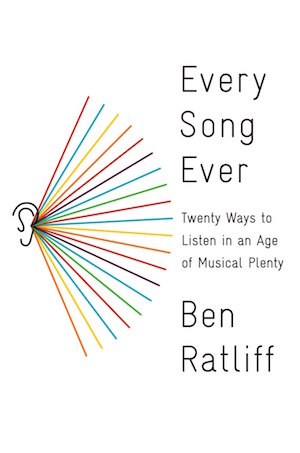It’s no surprise to see mainstream culture dumping the LP record. With phones that double as record collections and Internet connections that shame those of Napster’s heyday, listeners possess limitless resources that give even the poorest music fan access to an impressive digital library—one that might include artists as far-ranging as John Coltrane and Gwar to NWA and Philip Glass. And while many listeners are reluctant to admit it, it’s clear that modern tastes are shifting away from a certain generation’s preferred method of music consumption.
Listening to a full-length album has gone the way of the novel and the play; the mainstream tends to dabble in the art form, but few truly immerse themselves on the regular. Though the recent resurgence in vinyl LPs has illuminated an LP-dedicated niche, music patrons have monetarily backed their allegiance in the form of the iTunes single, the streaming app and YouTube. Thanks to technology, we’ve adapted to consuming music in three-minute bursts and watching TV shows in six-hour binges. Go figure.
 Considering the LP’s decline, you could point a finger at the iPod, Napster, Spotify or any other defendant in an ever-growing pile of guilty parties. Many people still do, as examinations of the state of digital music have (and will) populate the Internet for as long as it exists. But while many articles reveal how artists can exist in an age of digital excess, few writers have attempted to unfurl today’s seemingly infinite listening landscape. This is New York Times music critic Ben Ratliff’s aim within Every Song Ever: Twenty Ways to Listen in an Age of Musical Plenty, which deconstructs 20 musical themes through the lens of the modern listener.
Considering the LP’s decline, you could point a finger at the iPod, Napster, Spotify or any other defendant in an ever-growing pile of guilty parties. Many people still do, as examinations of the state of digital music have (and will) populate the Internet for as long as it exists. But while many articles reveal how artists can exist in an age of digital excess, few writers have attempted to unfurl today’s seemingly infinite listening landscape. This is New York Times music critic Ben Ratliff’s aim within Every Song Ever: Twenty Ways to Listen in an Age of Musical Plenty, which deconstructs 20 musical themes through the lens of the modern listener.
With decades of careful listening under his belt, Ratliff’s encyclopedic references might overwhelm even well-listened fans, but one quickly adapts to his method of exploration within the book. Through 20 listening-focused essays, Ratliff rarely addresses genre, historical context or even the character of the musicians. Instead, he explores themes like speed, repetition, improvisation and closeness, allowing him to jump between decades of recorded history with quick-fire examples. Readers will fly by legendary musicians like James Brown alongside mega-pop artists like Kesha or the chaotic stoner rock of Sleep—the book’s reference points never too nose-in-the-air to recognize excellence (or significance) in musical execution. Where Every Song Ever succeeds is in its adaptation; like the way we listen to music, these essays lean on certain cultural reference points rather than historical context. If you need any further evidence, look at the success of Guardians of the Galaxy: Awesome Mix Vol. 1, which moved more than a million copies with a collection of decades-old songs. Ratliff recognizes that the Internet—and modern culture—exists devoid of time, place and setting. And as a result, he wants to examine the landscape under that critical eye.
When Ratliff’s experiment is good, it’s very good. I’m a particular type of music geek, one of the studio gear-head variety, and I loved the chapters on audio space and density. There’s something authoritative about Ratliff’s approach that never shames or punishes readers with less dialed-in ears or less musical knowledge. Instead, this book acts as the record store clerk that the iTunes generation never bothered to meet. These chapters exist as explorative pieces, meant to be read and then re-read after a hard listen to his many suggested playlists, which feature Outkast’s “Rosa Parks” and Beethoven’s “Grosse Fugue” as neighbors. For whatever type of listener you are, I suspect that there will be a chapter within Every Song Ever that addresses the specific way you consume music.
But that’s the book’s main shortcoming as well; I figure it’ll be like pulling teeth to get this book into the hands of the people who need it the most. When stripped of character, legend and rock’n’roll lore, music criticism can be a bit of a slog for readers who aren’t completely immersed in the subject, and as cool as it’d be, I don’t see the overwhelming majority of the iTunes generation surrendering their attention to John Cage’s “4’33,” or Sleep’s Dopesmoker. The sole reason music has evolved the way it has—into a single-, download- and stream-based system—is because listeners essentially voted it into existence by accepting music as it was delivered, with raw mp3 files, audio streams and apps. So while it’s positive thinking to hope Every Song Ever might recontextualize the work of Wolf Eyes, Jimi Hendrix, Swans and D’Angelo for the modern listener, the exercise ultimately proves to be just that: an exercise for already-careful listeners meant to reacquaint themselves with a confusing time period.

